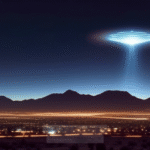What Happens to Consciousness After Clinical Death? Exploring the Enigma of Near-Death Experiences
What Happens to Consciousness After Clinical Death? Exploring the Enigma of Near-Death Experiences
The phenomenon of Near-Death Experiences (NDEs) has captivated humanity for centuries, sparking debates among scientists, philosophers, and spiritual seekers alike. What truly happens to our consciousness when we approach the brink of death? Are these experiences mere hallucinations, or do they offer a glimpse into a reality beyond our physical existence? This question is paramount as it touches on the essence of life, death, and the possibility of an afterlife. In this blog post, we will delve into this profound mystery, examining historical contexts, core theories, and the implications of NDEs while exploring real-world accounts that may illuminate the nature of consciousness beyond clinical death.
Historical Context of Near-Death Experiences
The concept of NDEs is not a modern phenomenon; historical accounts can be found across various cultures and religions. In ancient texts, such as the Tibetan Book of the Dead, narratives describe experiences of individuals who have died and returned, detailing visions of light and encounters with spiritual beings. In more recent history, Dr. Raymond Moody’s groundbreaking work in the 1970s, particularly his book “Life After Life,” popularized the term “Near-Death Experience” and categorized common elements such as out-of-body experiences, a sense of peace, and the presence of a bright light.
As medical advancements progressed, especially in resuscitation techniques, the study of NDEs gained traction. Research conducted by Dr. Bruce Greyson and other scholars led to a greater understanding of the psychological and physiological aspects of NDEs, revealing that these experiences occur across diverse demographics, irrespective of cultural or religious backgrounds.
Core Concepts and Theories Surrounding NDEs
At the heart of NDE research are several core concepts and theories that attempt to explain the experience of consciousness during clinical death. Some of these theories include:
- Physiological explanations: Some researchers propose that NDEs stem from neurological processes during traumatic events, such as hypoxia (lack of oxygen), chemical imbalances, or brain activity during cardiac arrest. These factors can create vivid hallucinations.
- Psychological theories: Others argue that NDEs are a form of coping mechanism for individuals facing mortality, helping them to process the experience of dying.
- Transpersonal perspectives: A more spiritual viewpoint suggests that consciousness exists independently of the physical body, and NDEs provide evidence of an afterlife or alternate dimensions of existence.
Real-World Examples of Near-Death Experiences
To better understand NDEs, let’s examine a few documented cases that have garnered attention:
- Dr. Eben Alexander: A neurosurgeon who experienced a profound NDE while in a coma due to bacterial meningitis. He reported a journey through a vibrant, otherworldly realm, meeting a divine presence and experiencing unconditional love. His account has sparked significant debate regarding the nature of consciousness.
- Maria’s Story: A woman who underwent cardiac arrest while giving birth recounted a vivid experience of floating above her body, observing the medical team attempting to revive her. She described seeing her deceased grandmother, which provided her with comfort and assurance.
These stories, among many others, highlight the personal and transformative nature of NDEs, often leading individuals to reevaluate their lives and beliefs about existence.
Scientific Research on NDEs
Scientific inquiry into NDEs has been both rigorous and controversial. Researchers have employed various methodologies, including interviews, surveys, and brain imaging studies, to explore the phenomenon. Key studies include:
- Greyson Scale: Developed by Dr. Bruce Greyson, this scale quantitatively measures the elements of NDEs, allowing for standardized research and comparison across cases.
- Cardiac Arrest Studies: Research conducted in hospitals has shown that patients who experience cardiac arrest often report similar NDE elements, suggesting a pattern that transcends individual experiences.
| Study | Findings |
|---|---|
| Greyson’s 1983 Study | Identified common features of NDEs among patients, including the sensation of leaving the body and encountering a bright light. |
| 2016 AWARE Study | Investigated patients’ perceptions during cardiac arrest, revealing that some accurately recalled events occurring during their clinical death. |
Practical Implications of NDEs
The implications of NDE research extend beyond scientific inquiry; they touch on psychological, philosophical, and spiritual domains. For many individuals who have experienced NDEs, the event often leads to significant life changes, including:
- Increased spirituality: Many NDE survivors report a heightened sense of spirituality and a desire to engage in more meaningful life practices.
- Fear of death reduction: NDEs often provide comfort and the belief that death is not the end, alleviating fears surrounding mortality.
- Changes in relationships: Survivors frequently reassess their relationships, striving for deeper connections with loved ones and a greater sense of compassion.
Alternative Perspectives on Near-Death Experiences
While many embrace the spiritual interpretations of NDEs, alternative perspectives exist. Skeptics often argue that NDEs can be explained through psychological and physiological phenomena without invoking supernatural explanations. For instance:
- Neurological Activity: Some scientists suggest that the brain may continue to function in a limited capacity even after clinical death, leading to vivid experiences.
- Psychological Defense Mechanisms: Psychologists argue that NDEs may serve as a coping mechanism during traumatic events, providing a comforting narrative during distressing times.
Common Misconceptions About NDEs
As with any enigmatic phenomenon, misconceptions about NDEs abound. Here are some common myths and clarifications:
- Myth: NDEs are purely hallucinations.
Clarification: While some elements may resemble hallucinations, many NDE survivors report experiences that are consistent and transformative, suggesting a deeper significance. - Myth: NDEs are exclusive to those near death.
Clarification: NDEs can occur in various contexts, including during trauma, surgery, or even intense emotional experiences.
Best Practices for Investigating NDEs
For those interested in exploring NDEs further, whether from a scientific or spiritual perspective, consider these best practices:
- Engage with survivors: Listening to firsthand accounts can provide invaluable insights into the subjective nature of NDEs.
- Stay informed: Follow reputable studies and research to understand the evolving landscape of NDE research.
- Encourage open dialogue: Create spaces for discussion where different perspectives can be shared, fostering a holistic understanding of the phenomenon.
Future Developments and Ongoing Research
The field of NDE research is ripe for exploration, with ongoing studies aiming to unravel the complexities of consciousness and the afterlife. Future developments may include:
- Advancements in brain imaging: Improved imaging techniques could provide deeper insights into brain activity during near-death experiences.
- Longitudinal studies: Tracking the long-term effects of NDEs on individuals’ lives could yield valuable data on their psychological and spiritual transformations.
Conclusion: The Mystery of Consciousness After Clinical Death
The question of what happens to consciousness after clinical death remains one of life’s greatest mysteries. Near-Death Experiences offer a compelling glimpse into this enigma, intertwining elements of science, spirituality, and personal transformation. Historical accounts, scientific research, and real-world examples contribute to a richer understanding of NDEs, suggesting that consciousness may exist beyond the confines of our physical bodies. As we continue to explore this profound topic, embracing diverse perspectives and fostering open dialogue will be essential in unraveling the mysteries of life, death, and beyond.
Other Articles
Recent Posts
- What Happened to Flight MH370? The Conspiracy Theories That Still Haunt Us
- What Secrets Lurk Within the Walls of the Infamous Trans-Allegheny Lunatic Asylum?
- What Evidence Supports the Existence of Bigfoot in the Pacific Northwest?
- What Happened to the Indus Valley Civilization? Unraveling the Mysteries of Ancient Urban Life
- Can Telepathy Be Scientifically Proven Through Laboratory Evidence?







